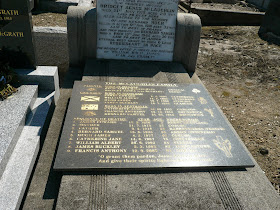2044 Private Stanley Grattan Gould, 26th
Infantry Battalion then 7th Machine Gun Company. Image courtesy AWM. Image DA10564.
Stanley Gould was the younger brother of John Gould, the subject of my last blog entry. Both brothers are featured on page 7 of the Coburg State School Soldiers' Book, which is available online on the Moreland Library Services Local History Catalogue.
Stanley enlisted in July 1915 aged 19 and sailed for the Front in September that year. He served briefly on the Gallipoli Peninsula before heading for France where he was wounded at Pozieres in August 1916 and evacuated to England with a mild gun shot wound to his arm. He rejoined his unit in October 1916.
After his return to Australia in April 1919, Stanley returned to the family home at 5 Young Street, Coburg until the early 1930s when he and his younger brother Allan crossed the continent and tried their luck as farmers in Carnamah, Western Australia.
You can read much more about Stanley (Dick) Gould on the award-winning Carnamah website, which is worth a visit even if you are not interested in the history of the area. It is a good-looking, easy to navigate site that will keep you interested for hours. The blog, the virtual museum, the Biographical Dictionary, the photo collection and all the other treats in store are there to remind all of us how 'alive' history can be.
Allan Gould, known as Angus, was born in Coburg in 1898, tried to enlist in 1916 when he was 18, but was rejected on account of poor eyesight. He tried again in January 1918 and was again rejected. Later, he served in World War Two, enlisting from Carnamah, Western Australia.
The Carnamah website provides more information on Allan (Angus) Gould's life in the West.
A fourth brother, Frank, born at Coburg in 1908, was too young to serve in WW1 but served as a Lieutenant in WW2, having enlisted from Wiluna in Western Australia. He moved to the West in 1926 to join his brothers on their farming venture at Carnamah.
By 1937, Stanley and Allan's partnership had broken up and Stanley was back living in the family home at 5 Young Street, Coburg.
West Australian, 28 June 1937, p.19
Stanley married Beryl Colman in 1939. They lived variously at Port Melbourne and Kew. He died at Kew in 1975 aged 79.
































